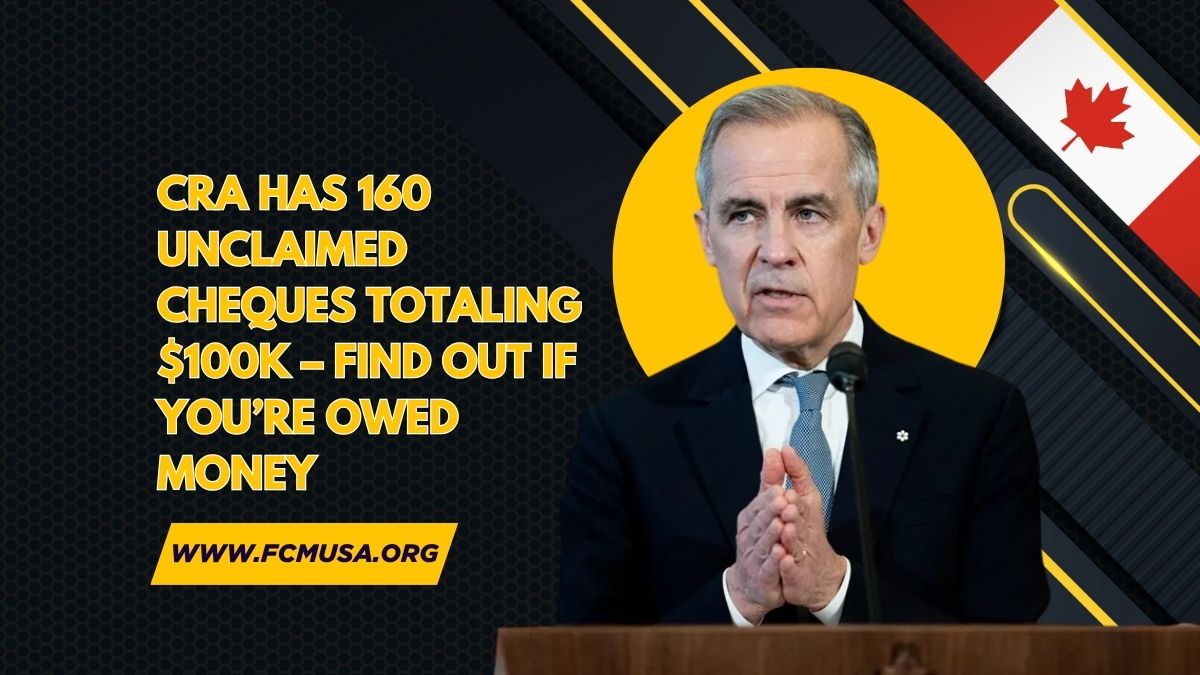CRA Has 160 Unclaimed Cheques Totaling $100K – Find Out If You’re Owed Money
The Canada Revenue Agency (CRA) is currently looking for the owners of 160 cheques, each worth over $100,000.
These cheques are part of an extensive pool of over 10 million uncashed cheques, totaling more than $1.7 billion in payments that have gone unclaimed for nearly three decades.
Overview of Uncashed Cheques by CRA
As of April 2025, the CRA has accumulated over $1.7 billion in uncashed cheques, representing millions of unclaimed refunds and benefits.
According to data gathered by the agency, this amount includes cheques that have remained uncashed due to reasons such as the recipient moving without updating their address or simply losing the cheque.
Breakdown of Uncashed Payments
The majority of the uncashed cheques — approximately 10.2 million — are for amounts under $1,000. However, a significant number of cheques, around 190,000, range between $1,000 and $100,000.
Notably, there are 160 cheques still waiting to be claimed, each valued at $100,000 or more — a sum that could be a substantial down payment on a home (outside of major cities like Vancouver, Toronto, and Montreal).
Cheques as Far Back as 1998
The uncashed cheques can date as far back as 1998, and because government-issued cheques never expire, the CRA can reissue these payments upon request.
CRA spokesperson Nina Ioussoupova explained that taxpayers can claim these uncashed cheques through the agency’s online tool, “My Account,” which is accessible on the CRA website.
How to Claim Your Uncashed Cheques
To claim uncashed cheques, individuals must log in to the CRA’s “My Account” service. Under the “Overview” page, there is a link to “Uncashed Cheques” where users can find a list of unclaimed cheques, including any amounts that have remained dormant for over six months. From there, the necessary claim forms can be accessed.
Steady Growth of Unclaimed Balances
Since the CRA introduced the online tool for uncashed cheques in 2020, the balance of unclaimed payments has steadily increased.
The amount of uncashed cheques reached $1.2 billion by April 2021 and grew by approximately $500,000 daily until it reached a record-high of $1.8 billion in April 2024.
However, for the first time since 2020, the total unclaimed balance slightly decreased, now standing at around $1.7 billion across 10.2 million uncashed cheques.
Funds Returned to Government Coffers
While the uncashed cheques remain unclaimed, the funds are not left idle. Instead, the money is returned to the government’s general funds and can be used elsewhere until the taxpayer claims it.
Claiming Your Unclaimed Payments
By March 2025, Canadians had successfully reclaimed approximately 4.5 million uncashed cheques, amounting to a total of $1.6 billion. The CRA encourages taxpayers to sign up for direct deposit to prevent missing any future payments.
The CRA is actively working to reunite Canadians with unclaimed cheques, including many worth over $100,000. The initiative to find the rightful owners of these funds continues to grow, with millions already reclaimed.
If you suspect you might have uncashed cheques waiting for you, it’s essential to check through the CRA’s online tool and claim what is rightfully yours. Signing up for direct deposit can ensure you don’t miss future payments as well.
FAQs
How do I find out if I have uncashed cheques with CRA?
To check for uncashed cheques, log in to the CRA’s “My Account” service on their website. Once logged in, navigate to the “Uncashed Cheques” link on the “Overview” page, where you will find a list of any unpaid amounts older than six months. You can then follow the instructions to claim the funds.
Can I still claim cheques issued years ago?
Yes, you can claim cheques issued as far back as 1998. As long as the cheque has not expired (which government-issued cheques never do), the CRA can reissue the payment if you request it.
Where does the money from unclaimed cheques go?
The money from unclaimed cheques is returned to the government’s general funds. It is used elsewhere until the rightful owner claims the payment.

